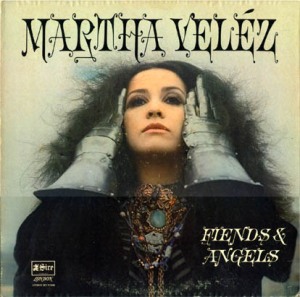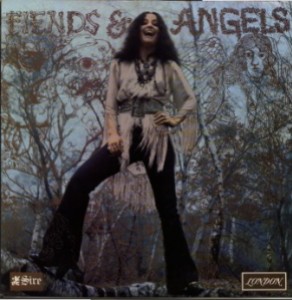There’s so much good new music out there. The best music of 2012:
 1. Radio Music Society, Esperanza Spalding: Invigorating blend of R&B, funk and jazz infused with top-shelf musicianship and an enticing lyrical quality. This is perhaps her best yet. Spalding sports a fluid, proficient and pleasing voice that delivers her poignant lyricism over the engaging compositions. Get the Deluxe Edition with a Making of DVD.
1. Radio Music Society, Esperanza Spalding: Invigorating blend of R&B, funk and jazz infused with top-shelf musicianship and an enticing lyrical quality. This is perhaps her best yet. Spalding sports a fluid, proficient and pleasing voice that delivers her poignant lyricism over the engaging compositions. Get the Deluxe Edition with a Making of DVD.
2. Locked Down, Dr. John: Black Keys guitarist Dan Auerbach gets an inspiration to record with the N’Awlins legend and they whip up a spooky, funky, voodoo dose of swamp funk mixed with hard rock sensibilities. Some of the best from recent vintage of the good Doctor.
3. Tramp, Sharon Van Etten: One of the truly remarkable and original sounding records from a singer/songwriter whose dense, penetrating lyrics are revealed through inventive arrangements that complement her songwriting.
4. Sunken Condos, Donald Fagen: At his wry, funky, satirical and stinging best. Glossed with a Steely Dan sheen but it still swings like mad.
5. Everybody’s Talkin’, Tedeschi-Trucks Band: Live outing from one of the best ensembles around today. A beautiful combination of blues, rock and pop whipped together with Derek Trucks’ slide lacing through it and the marvelous Susan Tedeschi’s soulful, blazing voice on top. Not to be missed live.
6. Sun, Cat Power: Return of the elusive, mercurial and magnetic singer/songwriter. Her best since The Greatest.
7. Election Special, Ry Cooder: Venerable American music stylist gives his biting political take on the present state of affairs with his usual entertaining, insightful views served with a helping of exquisite string playing.
8. Driving Towards The Daylight, Joe Bonamassa: Another edition in the evolving style and development of one of our best modern-day blues guitarists, who happens to have a soulful voice as well.
9. The Lion, The Beast, The Beat, Grace Potter & The Nocturnals: From the opening strains of the remarkable title track through another set of inspired rock and pop, a step forward and upward from this New England-based group. Their roots are firmly planted in the fertile ground of the 1960s and early ’70s. All framing Potter’s gloriously wild and unrestrained voice.
10. Blues Funeral, Mark Lanegan: Love him for his various collaborations over the years, not the least with Isobel Campbell, but there is something dark and compelling about this bluesy and funereal outing that is addicting. Continue reading Best of 2012


 In early 1970 Bruce put an intriguing and accomplished band together to tour in support of Songs For A Tailor. Called Jack Bruce & Friends, I noticed they were to play at the Fillmore East the weekend of January 30-31 as the opening act for Mountain! Leslie West’s group, at the time, was of course doing very well commercially in the wake left by Cream, but it startled and somewhat annoyed me that Bruce would actually be opening for them.
In early 1970 Bruce put an intriguing and accomplished band together to tour in support of Songs For A Tailor. Called Jack Bruce & Friends, I noticed they were to play at the Fillmore East the weekend of January 30-31 as the opening act for Mountain! Leslie West’s group, at the time, was of course doing very well commercially in the wake left by Cream, but it startled and somewhat annoyed me that Bruce would actually be opening for them. Featuring three hard rock virtuosos in Led Zeppelin bassist John Paul Jones, Dave Grohl, from Foo Fighters, who switches from guitar back to drums, his spot in Nirvana, and Josh Homme of Queens Of The Stone Age on guitar and lead vocals, the group exhibits a competency and energy rarely found in the genre today.
Featuring three hard rock virtuosos in Led Zeppelin bassist John Paul Jones, Dave Grohl, from Foo Fighters, who switches from guitar back to drums, his spot in Nirvana, and Josh Homme of Queens Of The Stone Age on guitar and lead vocals, the group exhibits a competency and energy rarely found in the genre today.

 Cream was scheduled to play at Boston’s Back Bay Theatre in April, but they were also going to play near my hometown in New Haven at Yale’s Woolsey Hall on April 10th and I decided to come home for that, mainly because I had a new girlfriend who was still in school in New Haven. This would be our first big concert date. That made sense.
Cream was scheduled to play at Boston’s Back Bay Theatre in April, but they were also going to play near my hometown in New Haven at Yale’s Woolsey Hall on April 10th and I decided to come home for that, mainly because I had a new girlfriend who was still in school in New Haven. This would be our first big concert date. That made sense. I was having mid-afternoon waffles at a small breakfast/dinner restaurant near Kenmore Square when my buddies, one of whom was a fellow bass player from Connecticut, and I found out that Cream, yes that Cream, would be playing practically across the street at a new club called the Psychedelic Supermarket. I was astonished by my good fortune that Cream, one of my favorite bands would be in town, just a few blocks from my dorm on Commonwealth Avenue, and that they were scheduled to play for two weeks! I intended going more than once.
I was having mid-afternoon waffles at a small breakfast/dinner restaurant near Kenmore Square when my buddies, one of whom was a fellow bass player from Connecticut, and I found out that Cream, yes that Cream, would be playing practically across the street at a new club called the Psychedelic Supermarket. I was astonished by my good fortune that Cream, one of my favorite bands would be in town, just a few blocks from my dorm on Commonwealth Avenue, and that they were scheduled to play for two weeks! I intended going more than once. Until then, it had fetched rather pricey numbers on auction sites despite not having been a big seller at the time of its release in 1968. Still it was one of the defining blues-rock albums of the times, bringing together an almost perfect combination of singer, players and producer for a raw blues outing with unbridled energy. And some of the best playing by some of England’s best musicians.
Until then, it had fetched rather pricey numbers on auction sites despite not having been a big seller at the time of its release in 1968. Still it was one of the defining blues-rock albums of the times, bringing together an almost perfect combination of singer, players and producer for a raw blues outing with unbridled energy. And some of the best playing by some of England’s best musicians. The guitar solos are ferocious on most cuts and although Clapton is said to have played on only four, he is extremely recognizable on the heavy groove of Lightnin’ Hopkins’ Feel So Bad, I’m Gonna Leave You (perhaps the album’s best two tracks), It Takes A Lot To Laugh, It Takes A Train To Cry and In My Girlish Days. This was confirmed on a Velez compilation, Angels Of The Future Past, released on CD in the late ’80s. The other solos are just as powerful and inventive, perhaps attributable to the only listed guitarist on the session, Rick Hayward, although Spit James (Keef Hartley) and Paul Kossoff (Free) are said to have also participated.
The guitar solos are ferocious on most cuts and although Clapton is said to have played on only four, he is extremely recognizable on the heavy groove of Lightnin’ Hopkins’ Feel So Bad, I’m Gonna Leave You (perhaps the album’s best two tracks), It Takes A Lot To Laugh, It Takes A Train To Cry and In My Girlish Days. This was confirmed on a Velez compilation, Angels Of The Future Past, released on CD in the late ’80s. The other solos are just as powerful and inventive, perhaps attributable to the only listed guitarist on the session, Rick Hayward, although Spit James (Keef Hartley) and Paul Kossoff (Free) are said to have also participated.